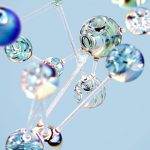neural-network
Neural Network: 7 Ways to Boost AI Performance in 2025
In the rapidly evolving world of artificial intelligence, the term neural network stands out as a cornerstone of modern innovation. These sophisticated computational models, inspired by the human brain, are revolutionizing how we process data, make predictions, and solve complex problems. From powering self-driving cars to enabling advanced medical diagnostics, understanding the intricacies of a neural network is crucial for anyone looking to leverage the full potential of AI.
Understanding the Core Mechanics of a Neural Network
At its heart, a neural network is a system of interconnected nodes, or “neurons,” organized in layers. Each neuron takes in inputs, performs a simple computation, and then passes the output to subsequent neurons. This layered structure allows the network to learn intricate patterns and relationships within vast datasets, far beyond the capabilities of traditional algorithms.
The Inspiration: Mimicking Biological Intelligence
The concept of a neural network draws inspiration from the biological neural networks found in the human brain. While a simplified abstraction, this inspiration has led to powerful models capable of learning from experience. This adaptive learning is what makes them so versatile and effective in various applications.
Key Components of a Neural Network Architecture
Every neural network, regardless of its complexity, shares fundamental components that dictate its function:
- Input Layer: This is where your data enters the network. Each node in this layer represents a feature of the input.
- Hidden Layers: These intermediate layers perform the bulk of the computational heavy lifting. They extract progressively more abstract features from the data.
- Output Layer: The final layer produces the network’s prediction or classification based on the processing done in the hidden layers.
- Weights and Biases: These are the parameters that the network learns during training, determining the strength of connections between neurons.
- Activation Functions: Non-linear functions applied within neurons, enabling the network to learn complex, non-linear relationships.
Mastering Neural Network Architectures for Optimal Performance
The choice of a neural network architecture significantly impacts its performance and suitability for specific tasks. Diverse architectures have emerged to tackle different types of data and problems, each with unique strengths.
Feedforward Networks: The Foundational Structure
The simplest type, feedforward neural networks, process information in one direction, from input to output, without loops. They are excellent for tasks like image classification and regression, serving as a fundamental building block for more complex models.
Recurrent Neural Networks (RNNs) and Gated Recurrent Units (GRUs)
For sequential data like text or time series, Recurrent Neural Networks (RNNs) are invaluable. They possess internal memory, allowing them to process sequences by considering previous elements. A significant advancement in RNNs is the Gated Recurrent Unit (GRU), which, along with Long Short-Term Memory (LSTM) units, addresses the vanishing gradient problem, enabling RNNs to learn long-term dependencies effectively. For more on the evolution of deep learning, you can explore resources like Wikipedia’s Deep Learning page.
Convolutional Neural Networks (CNNs) for Visual Data
Convolutional Neural Networks (CNNs) excel in image and video processing. They use specialized convolutional layers to automatically and adaptively learn spatial hierarchies of features from input images, leading to breakthroughs in computer vision tasks such as object detection and facial recognition.
Advanced Models: Squeeze-and-Excitation Networks
Beyond the core architectures, advanced techniques like the Squeeze-and-Excitation (SE) model enhance network performance by allowing the model to perform dynamic channel-wise feature recalibration. This method adaptively adjusts the importance of different feature channels, leading to improved representational capacity, often boosting accuracy in complex tasks.
Why Neural Networks Outperform SOAT Methods
The ability of modern neural networks to consistently surpass traditional State-Of-The-Art (SOAT) methods stems from their intrinsic design and learning capabilities.
- Automatic Feature Engineering: Unlike traditional machine learning, where features must be manually engineered, neural networks can automatically learn hierarchical features directly from raw data.
- Scalability with Data: As the volume of data increases, neural networks often exhibit improved performance, while many SOAT methods hit a plateau.
- Handling Non-Linearity: Their layered structure with activation functions allows them to model highly complex, non-linear relationships that linear models cannot capture.
- Generalization: Well-trained neural networks can generalize effectively to unseen data, making them robust for real-world applications.
Key Applications of Neural Networks Today
The impact of neural networks is pervasive, touching nearly every industry. Their versatility allows them to tackle a broad spectrum of challenges.
From Image Recognition to Natural Language Processing
In computer vision, neural networks power everything from face unlock on your phone to sophisticated medical image analysis. In natural language processing (NLP), they enable machine translation, sentiment analysis, and intelligent chatbots that understand and generate human-like text. For a deeper dive into machine learning fundamentals, consider resources like Wikipedia’s Machine Learning overview.
Predictive Analytics and Decision Making
Businesses leverage neural networks for predictive analytics, forecasting market trends, customer behavior, and even equipment failures. This capability enhances decision-making processes, leading to optimized operations and strategic advantages.
Optimizing Your Neural Network Models for Peak Performance
Achieving peak performance with a neural network involves more than just selecting an architecture. It requires careful optimization and strategic implementation.
Training Strategies and Data Preparation
Effective training requires clean, well-preprocessed data. Techniques like data augmentation, normalization, and proper splitting into training, validation, and test sets are crucial. Optimization algorithms like Adam or SGD, coupled with appropriate learning rates, guide the network’s learning process efficiently.
Overcoming Common Challenges
Challenges like overfitting, underfitting, and computational expense are common. Regularization techniques (e.g., dropout, L1/L2 regularization), early stopping, and leveraging GPU acceleration are vital for building robust and efficient models.
The Future Landscape of Neural Networks
The field of neural networks is continuously evolving. We are witnessing advancements in areas like explainable AI (XAI), federated learning, and quantum neural networks, promising even more powerful and accessible AI solutions in the near future. The drive for more efficient, interpretable, and ethical AI systems will continue to shape research and development.
Ready to explore the power of neural networks? Dive deeper into their applications and advancements to unlock new possibilities.
Abstract neural network connections, AI brain illustration, deep learning concept, futuristic data pathways
Featured image provided by Pexels — photo by Markus Winkler




